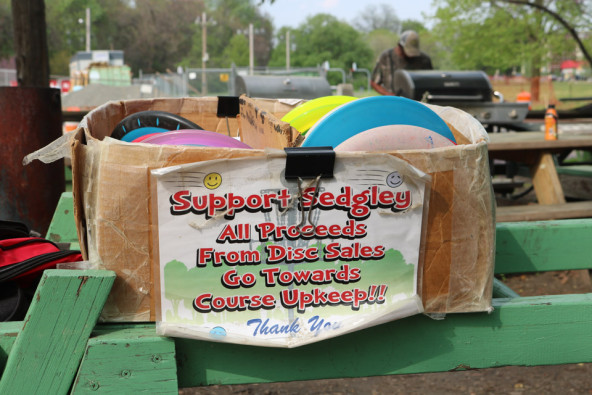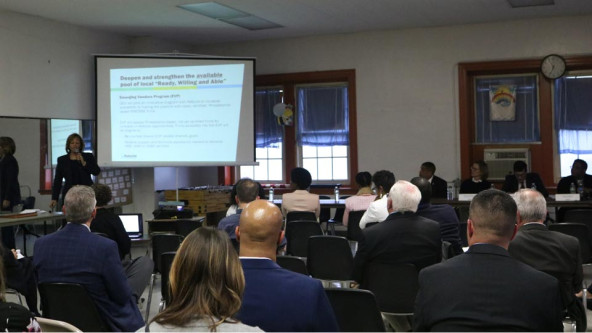When city government officials combine technical expertise with a real understanding of local residents’ lives, they stand to create truly effective policy. That diligence, however, requires time, money, and a willingness to experiment—resources municipalities usually have in short supply—and as a result, it can seem unrealistic.
But experiments with civic engagement, outreach, and philanthropic models in Philadelphia show it’s possible to make real progress despite these constraints. With our colleague, Chayenne Polimedio, and at the invitation of the Knight Foundation, we spent nearly a year researching how nonprofits, philanthropy, and local government in Philadelphia are engaging with and learning from “lived experts”—people who have first-hand experience with their community’s unique challenges—and combining these hyper-local insights with their own technical, policymaking expertise to make municipal government more responsive to people’s needs. Here is a look at three ways this is playing out.
Change What Services Are “Supposed” to Offer
At a time when civic trust is low and loneliness is high, public spaces like parks, recreation centers, and libraries can make a difference by fostering personal connections, as well as social capital between residents and government. They are where residents gather to participate in educational and after-school programming, to use free wi-fi and information resources, and to work out and play with recreational equipment. In short, they are accessible places where communities and local government can meet.
 Discs for sale at the Sedgley Woods golf course to benefit the “friends” group. (Photo by Elena Souris)
Discs for sale at the Sedgley Woods golf course to benefit the “friends” group. (Photo by Elena Souris)
Are you enjoying this article? Read more like this, plus SSIR's full archive of content, when you subscribe.
One innovative way to expand civic participation around existing public spaces is through structured volunteer organizations. In Philadelphia, most parks and libraries have “friends” groups, and recreation centers have advisory councils. These groups are made up of neighbors who help support their public spaces through fundraising, planning programming, providing light maintenance, and doing other work. They also host meetings and events, where they act as a mediator between group members and the city. In these forums, local residents can voice their concerns and views on municipal matters and build relationships with civil servants. A public park can become an entry point into local politics and enable new community leaders, thus helping the city make decisions with residents, rather than for them.
“The best caretakers [of public spaces] are the stakeholders,” says John “Stash” DiSciascio, executive director of a disc golf course volunteer group called Friends of Sedgley Woods. Members of the group participate in social gatherings, as well as tournaments to raise money for course upkeep and projects. DiSciascio’s passion for his neighborhood park has made him well-known within the Philadelphia Parks and Recreation Department and helped him become a community leader within the municipal system.
But even residents with less time than volunteer group members regularly visit parks, rec centers, and libraries. George Matysik, executive director of the Philadelphia Parks Alliance (PPA), sees these spaces as important channels for public service delivery—and not just for sports teams and afterschool activities. The alliance is working on revamping rec centers so that programming better serves the broader community. “Libraries are more than just books, and rec centers are more than just basketballs,” he says. One form of outreach involves block-walking to invite neighbors to free community dinners, where 20-60 residents usually turn out. When Matysik speaks with them, he’s careful to ask what the community needs, not what the rec center needs. The former gets answers like “ESL classes” or “job training programs”; the latter yields “sports equipment”—what people think rec centers are “supposed” to have. With this feedback in hand, PPA has set up more community meetings and elections for advisory council positions. This has created an effective outreach pipeline for diverse community members to build up sustained engagement with their rec centers and put their ideas into practice—without the time commitment of a formalized volunteer position.
 A Rebuild community meeting hosted at the Disston Recreation Center in Philidelphia in 2018. (Photo by Elena Souris)
A Rebuild community meeting hosted at the Disston Recreation Center in Philidelphia in 2018. (Photo by Elena Souris)
Combine Creative Financing with Better Public Service Delivery
Social sector leaders can support and influence projects within City Hall, not just outside it. As a 2017 Knight Cities Challenge winner, for example, PHL Participatory Design Lab used its philanthropic dollars to place design fellows within a variety of Philadelphia’s city departments, with the aim of working with city agencies and recipients of public services to improve service delivery. One fellow worked with the Office of Homeless Services (OHS), which serves 20,000 people each year, to help define what “person-centered”—vs. traditional top-down service delivery—looks like in practice. One of the findings from interviews with OHS users was that not being allowed to bring in their own food into the centers, which it established as a health and safety precaution, was demoralizing. OHS is now working to make changes to this system.
Philadelphia has also found a way to fund resident-based projects through a controversial soda tax, which taxes sweetened drinks at 1.5 cents per ounce. The project’s funding model—a seven-year, $500 million investment—involves city government capital funds ($48 million); state, federal, and philanthropic grants ($152 million); and bonds. Alongside this, the Philadelphia-based William Penn Foundation has pledged $100 million to neighborhoods for Rebuild, a public-private effort that includes $3.28 million in new funding for the Fairmount Park Conservancy to support a citywide, civic engagement strategy. The strategy’s focus will be giving residents the ability to shape activities in Philadelphia’s public spaces. The Knight Foundation is also supporting Rebuild by making investments throughout the city. While the soda tax faced a variety of legal challenges, the Pennsylvania Supreme Court ultimately upheld it, and the money will support public services like education and repairing public sites through the Rebuild initiative.
Bring In New Voices—in a Structured, Careful, Thorough Way
Rebuild will seek to revitalize public spaces, empower communities, and promote economic opportunity. Given its massive scope, it will be especially important to involve community voices in the process. Rebuild, the city, and nonprofits see the project as an opportunity to create new interest around public spaces. Because not all prospective sites will receive financing, they’re not only using the moment to build future civic engagement infrastructure, but also supporting existing volunteer groups to make them stronger, more equal, and more inclusive.
Volunteer groups often reflect larger-scale, city-wide inequality. Higher-income residents are more likely to have free time for community organizing and fundraising. In addition, members of decades-old groups may not adapt to a neighborhood’s changing needs, or conversely, volunteer groups in gentrifying neighborhoods may reflect only a small demographic. To combat problems like these, the Fairmont Park Conservancy carried out organizational surveys to gauge its strengths and weaknesses, and required that advisory councils that weren’t following the mandatory election cycle hold new elections. Such efforts will help ensure that collaborative efforts to amplify residents’ voices will be more equitable.
Philanthropic work in Philadelphia also speaks to the opportunity for national and community foundations to work together. Some of the projects on the ground in Philadelphia are connected to the national Reimagining the Civic Commons Project, which includes a $40 million donor collaborative with $20 million from national foundations and $20 million in local matching funds. These funds are focused on rebuilding five cities: Akron, Ohio; Chicago, Illinois; Detroit, Michigan; Memphis, Tennessee; and Philadelphia. New models of local and national philanthropy, combined with creative financing like soda taxes or municipal bonds, demonstrate creative approaches to addressing the budget deficits municipalities face without sacrificing innovative policy approaches.
While some of these suggestions may seem small in scale, they nevertheless offer concrete examples of how social sector leaders can help bring together the expertise of residents and city government for healthier and more-vibrant communities—and how large-scale philanthropic work can best support those efforts.
Support SSIR’s coverage of cross-sector solutions to global challenges.
Help us further the reach of innovative ideas. Donate today.
Read more stories by Hollie Russon Gilman & Elena Souris.

